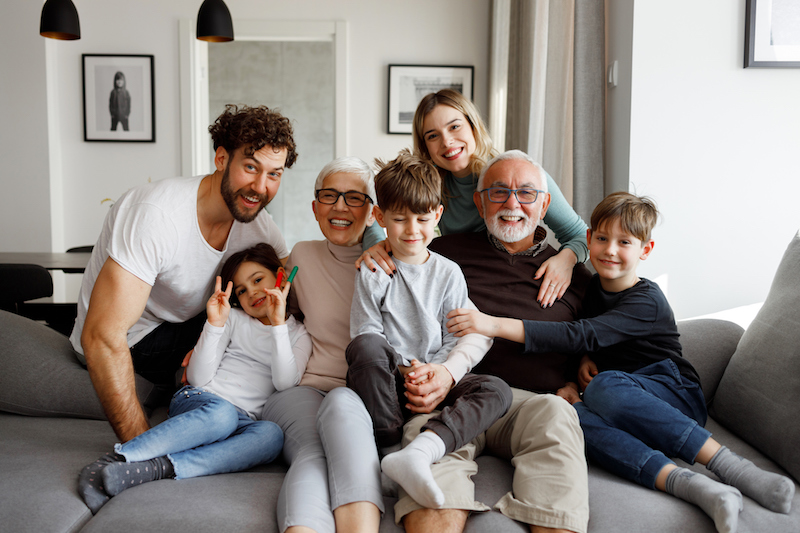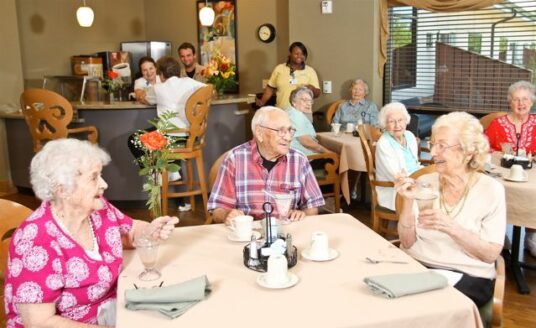Human connection can take many forms – a simple conversation, helping someone with a task, expressions of gratitude, sentiments of praise or respect, or sharing experiences or memories. Whatever form it takes, connecting is about being open and available to another person. When it comes to senior connections, it can be a vital boost to their physical, mental and emotional health.
Physical distance, the hectic pace of life, and the many distractions that present themselves to us on a daily basis are all barriers to human connection.
What are some ways to overcome these barriers, and keep seniors connected with family and friends?
In-Person Visits
No connection is more meaningful, and potentially beneficial, than a face-to-face visit. Being physically in a room with someone offers a greater understanding of how they are doing. Also, activities can be more interactive. For example:
- Putting together a photo album
- Working on a jigsaw puzzle
- Playing card or board games
- Going for a walk together
- Visiting a park
- Going on a shopping trip
- Preparing and eating a meal together
If possible, set up a regular day and time for these visits. Use the visit to conveniently deliver a needed item or something that will make your loved one smile. Also, if grandchildren are available, try to schedule times when they can join you. Family get-togethers, parties, celebrations and holiday observances are also great opportunities for seniors to socialize and connect with family and friends.
Senior Connections at a Distance
When time, distance and other commitments get in the way, there are other ways to keep seniors connected.
Facebook. People 65 and older comprise the fastest growing number of Facebook users. And about 70 percent of all Americans use the site.
That means Facebook friends can include your senior’s adult children, grandchildren, other family members, and friends. Seniors and their Facebook friends can share pictures, music, videos and articles, as well as their own thoughts and opinions.
Instagram. Instagram is another social networking application similar to Facebook that emphasizes the visual sharing of photos and videos. Interaction from followers includes commenting, liking, and sharing messages. Instagram tends to skew to a younger audience, but many older generations still enjoy it.
Nextdoor. This platform can allow your senior loved one to connect with people in their neighborhood. Information includes neighborhood events, local restaurant recommendations, or how and where to join in on neighborhood activities.
Zoom. The audio and video capabilities of Zoom are great for a virtual group gathering of family members and friends. View your grandchild’s latest art project or enjoy a virtual party with loved ones.
WhatsApp. Keep seniors connected with groups of friends and relatives, using group chats, sharing messages, photos, and videos.
TIPS
- Seniors should talk to their families about exploring ways to stay connected over social media, and not be afraid to ask for help and suggestions.
- Friends, family and seniors can also set up a schedule or times to share with each other on a social media site.
- Use social media to also set up face-to-face meetings and activities.
- Seniors should acquaint themselves with online security precautions.
Pick up the phone. A phone call may be considered “low-tech” in this day and age, but it is still a highly effective way to connect, especially if a senior is intimidated by social media. Texting is also a quick way to share information and ask how a loved one is doing. Set up regular times for these communications.
Write a letter. A handwritten letter to a senior can be a delightful surprise. A letter, as opposed to a text message or an email written and sent in a few seconds, requires an extra investment in time and effort to compose. The recipient can hold it in his or her hands, and they tend to spend much more time reading it.
Stay Connected
Even if family and friends live far away from a senior loved one, it is still essential to find ways to stay connected. Even at a distance, a feeling of closeness and belonging can be created. Emotional support, care, empathy, laughter and concern are not restricted to a place. They exist and are maintained in the heart and the mind.
Want to find out more?
If you’d like to stay up to date with Bethesda Health Group, sign up here to receive our blog and newsletters!
"*" indicates required fields
Related Articles
Want to find out more?
If you’d like to stay up to date with Bethesda Health Group, sign up here to receive our blog and newsletters!
"*" indicates required fields



